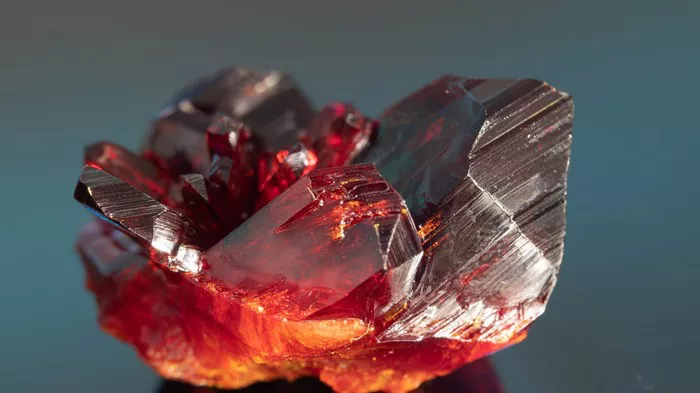Gemstones have fascinated humanity for centuries, captivating us with their vibrant colors, stunning brilliance, and inherent value. Among the most sought-after gemstones are ruby and garnet, both known for their captivating red hues. However, when it comes to comparing the cost, there is a notable difference between these two gemstones. In this article, we will explore the factors that determine the value of ruby and garnet, and delve into why ruby generally commands a higher price tag.
Understanding Ruby and Garnet
Ruby and garnet are both red gemstones, but they belong to different mineral families. Ruby is a variety of the mineral corundum, while garnet is a diverse group of minerals with various chemical compositions. The most highly prized and valuable variety of corundum is ruby, whereas garnet comes in different species, such as almandine, pyrope, and spessartine, among others.
Factors Affecting Gemstone Value
To understand the price difference between ruby and garnet, it is crucial to consider the factors that influence the value of gemstones:
Color:
Color is one of the most critical factors in determining the value of a gemstone. For rubies, a rich, vibrant red hue is highly desirable. The color should be intense and evenly distributed throughout the stone. Garnet also comes in red shades, but its color range is broader, ranging from deep red to orange-red, purplish-red, and even green. The scarcity and intensity of color play a significant role in determining the value of both ruby and garnet.
Clarity:
Clarity refers to the presence of inclusions or internal flaws within a gemstone. Rubies are known to have more inclusions compared to garnets, and therefore, high-quality rubies with exceptional clarity are relatively rare and command higher prices. On the other hand, garnets are generally known for their good clarity, and even eye-clean stones are more common.
Size:
Gemstone size is another essential factor in determining value. Larger gemstones are rarer and more valuable than smaller ones. Since ruby is a rarer gemstone overall, finding larger rubies becomes increasingly challenging, making them more valuable per carat compared to larger garnets.
Cut:
The cut of a gemstone affects its brilliance, overall appearance, and potential value. Precise and well-executed cuts maximize a stone’s beauty, enhancing its color and sparkle. Both ruby and garnet can be cut into various shapes, but the quality of the cut can significantly impact their value.
Origin:
The origin of a gemstone can influence its value. Historically, certain regions have been renowned for producing exceptional rubies, such as Myanmar (formerly Burma), Mozambique, and Madagascar. Rubies from these renowned sources often carry a premium due to their provenance and the quality associated with them. While garnets also have notable sources, the impact of origin on garnet prices is generally less pronounced compared to rubies.
Price Comparison: Ruby vs Garnet
When comparing the prices of ruby and garnet, it becomes evident that ruby commands a significantly higher value. The price disparity between the two can be attributed to several key factors:
Scarcity:
Ruby is rarer than garnet, particularly high-quality rubies with exceptional color and clarity. The scarcity of fine rubies drives up their market value, making them more expensive compared to garnets.
Demand:
Ruby has enjoyed a long-standing reputation as one of the most sought-after gemstones, often associated with wealth, passion, and royalty. The demand for rubies, especially top-quality stones, is consistently high, which further contributes to their higher price point. Garnets, while appreciated for their beauty, do not command the same level of demand or historical prestige as rubies.
Color Intensity:
The intense and vivid red color of rubies is highly desirable and often sought after by gemstone connoisseurs and collectors. The vibrant red hues of rubies are typically more coveted compared to the broader range of red shades exhibited by garnets, leading to higher prices for rubies with exceptional color.
Gemstone Identity:
The perception and identity of a gemstone also play a role in determining its value. Ruby has long been associated with prestige, luxury, and high-end jewelry. Its status as one of the traditional “big four” gemstones (alongside diamonds, sapphires, and emeralds) further solidifies its position as a highly prized gem. Garnets, although beautiful and valued in their own right, do not carry the same historical and cultural significance as rubies.
Conclusion
When comparing ruby and garnet, it becomes evident that ruby is generally more expensive due to its rarity, demand, and association with luxury and prestige. The vibrant red color, exceptional clarity, and scarcity of high-quality rubies contribute to their higher market value. Garnets, on the other hand, are more readily available and come in a broader range of colors, making them a more affordable alternative.
Ultimately, the choice between ruby and garnet depends on personal preferences, budget considerations, and the desired purpose of the gemstone. Both gemstones possess unique beauty and appeal. Whether one seeks the allure of a valuable ruby or the captivating charm of a garnet, the decision should be guided by individual taste, symbolism, and the intended use of the gemstone.


